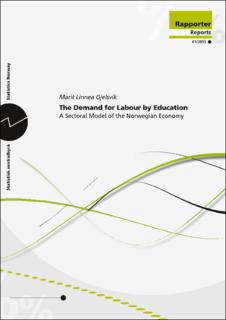| dc.description.abstract | Since the 1970s, relative wages have remained fairly stable in Norway, and the
structure of wages can be regarded as relatively compressed. This means that
wages are relatively low for workers with high skills whereas wages for low skilled
workers are high, by international comparison. This makes it more attractive for a
person seeking employment to come to Norway if he or she is low skilled. After
the enlargement of the EU/EEA in 2004, the number of migrant workers to Norway
has increased sharply. It is therefore of particular interest to examine the factors
that determine the enterprises' demand for labour by education, in particular the
importance of relative wages.
This report studies the factors that determine the demand for workers with different
skills. In particular, we investigate to what extent relative wage differences may
explain the large increase in the demand for highly educated labour in the longer
term. Earlier modelling of demand for labour in Norway has in large part distinguished between workers with high and low education. In this report, we divide the
workforce into three different groups according to the level of education. Persons
with primary and secondary general education are considered as low skilled, while
those with higher education at university or college level are considered as high
skilled. Persons with secondary vocational education do not formally have longer
education than those with secondary general education, but they have acquired
technical skills, and are possibly more skilled than persons with secondary general
education in working life. This labour category is therefore considered to be medium skilled.
In this report we examine the price sensitivity of demand for labour with different
education and the substitution possibilities between education groups. The analysis
is based on data from 1972-2007 and includes 13 industries in the Norwegian market activities. Our results indicate by and large greater price sensitivity in demand
for labour with low skills. A wage increase will thus lead to a greater decline in
demand for low skilled labour than for those with medium and high skills. Furthermore, we find that the various educational groups are substitutes in most industries and that the substitution possibilities are generally greater between low and
medium skilled labour. The effects are considerable in some labour intensive industries, indicating that higher relative wages for low skilled are likely to result in a
shift in demand towards medium skilled labour at the expense of low skilled labour. We also find support for the theory that technological progress increases
demand for high skilled labour and reduces the need for low skilled labour. | en_US |

